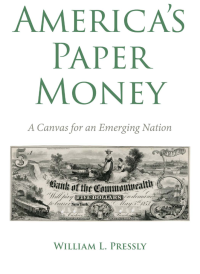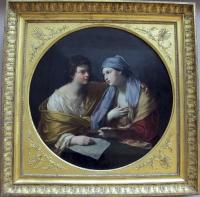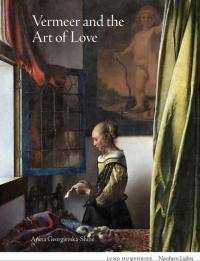Prof. Abby McEwen awarded Inaugural Do Good Campus Fund Grant
The $25,000 grant will focus on providing students opportunities to "understand the process of commissioning and installing public art."


Research in art history and archaeology is an interdisciplinary enterprise.
Engaging diverse theoretical frameworks and research methods, our faculty produce innovative scholarship in the form of books and articles, digital projects, museum exhibitions, public lectures and more. Our faculty lead national networks and conferences (including the Archaeological Institute of America and the College Art Association), providing innovative research frameworks and making significant contributions to UMD's research enterprise.
Consolidated ARTH Statement of Commitment to Diversity, Equity and Inclusion
(Prepared by the DEI Task Force and Approved by GAHA May 2022)
We, the members of the Department of Art History and Archaeology at the University of Maryland, affirm that Black lives matter and condemn the ongoing violence of systemic racism, xenophobia, homophobia, transphobia, and other acts of injustice and harm impacting BIPOC and other marginalized people. We recognize and are willing to confront the roles of Art History and Archaeology in elevating and perpetuating Eurocentrism and its attendant systems of oppression including colonization, exploitation of labor, exploitation of the nonhuman world, sexism, classism, and white supremacy inside and outside academia. We recognize that this list is not all-inclusive and is ever evolving, and to it more will be added. Continuing the work begun by graduate students, faculty, and staff in the summer of 2020 following the murder of George Floyd by police, we commit to building and maintaining a more inclusive, equitable, anti-racist and pluralistic department. As part of this commitment, we recognize the need to confront and redress bias and harm and to challenge monocultural norms and expectations.
In this process, we are inspired by and join the campus-wide efforts to reckon with the University of Maryland’s long record of discrimination, racial injustice, and actions that undermine the very principles of intellectual and moral integrity for which we stand.
We are committed to lifting up and expanding the diversity of our department community and to improving inclusivity and equity in our departmental practices, policies, and culture. In the study and practice of art history and archaeology, diversity and differences are assets. Our department affirms that diversity is expressed in myriad forms, including race, ethnicity, sex, gender, sexual orientation, class, immigration status, body type, language, culture, national origin, religion, age, ability, and political perspective. We are made stronger by inviting in and providing for the diverse voices, approaches and contributions that form the foundation of our twinned disciplines, and which enable our community, as a whole, to thrive. While our disciplines have collaborated in structures of oppression, we wish to affirm the role that we in the humanities and in art history and archaeology can play in helping to envision and make possible a world that is both sustainable and just.
We envision our department as a space of care, safety, and respect for all of our members. All of our voices are valuable and our actions matter. We commit to upholding this vision in our work together.
This essential new volume serves as a critical resource and details the richness and complexity of the work of Joyce J. Scott (b. 1948), beginning with an overview of the artist’s 50-year career—an interconnected, community-generating practice that embraces performance art, beaded necklaces and sculptures, wall hangings, and prints. Interviews with the artist by Leslie King Hammond and Valerie Cassel Oliver focus on Scott’s matrilineage and womanist ethos and on the genre-defying choreography of her career across disciplines. Six thematic essays by established and emerging scholars discuss the ancient and global reach of beads, including Yorùbá traditions; consider the utility of satire and performance in connection with the work of emerging Black artists; and explore the significance of geography, history, and place. Excerpts from foundational out-of-print texts and an illustrated chronology annotated by Scott appear alongside contributions by artists Sonya Clark, Oletha DeVane, Jeffrey Gibson, Kay Lawal-Muhammad, Malcolm Peacock, and William C. Rhodes III. Scott makes difficult subjects intimately felt, confronting histories of trauma through wearable art and exquisite sculpture. With humor and pathos, she twists menacing stereotypes into grotesque and tender retorts that spur conversation, making art a vehicle for learning, reflection, and healing.
Distributed for the Seattle Art Museum and Baltimore Museum of Art
Exhibition Schedule:
Baltimore Museum of Art
(March 24–July 14, 2024)
Seattle Art Museum
(October 17, 2024–January 20, 2025)

The Massachusetts Bay Colony in 1690 became the first government in the Western world to print paper money, the imagery for which initiated an indigenous American art form of remarkable dynamism and originality. After the Revolutionary War, disillusioned by how quickly its promiscuous printing of Continental currency had led to hyperinflation, the U.S. government left it to private institutions such as state-chartered banks to carry on this artistic American tradition. Adorned with a vast variety of images, bank notes soon became the fledgling country’s primary currency. With pressures of the Civil War, the federal government in 1861 began taking charge of the paper-money supply by creating a national currency; simultaneously, the Confederate States of America was creating a competing self-image, making heavy use of bank-note vignettes. Later, collaboration between government engravers and well-known artists on the 1896 Silver Certificates marked the apex of U.S. government currency design. For two centuries, American creativity and technical ingenuity resulted in imagery on paper money that helped create and enhance the nation’s imagined self.
Read More about America's Paper Money: A Canvas for an Emerging Nation
Augusta Savage intended to build monuments. In the 1930s and early 1940s, the
Harlem-based sculptor envisioned memorials to Jean Baptiste Point DuSable, the vaudeville star
Florence Mills, the World War I service of the “Harlem Hellfighters,” and the writer and civil
rights leader James Weldon Johnson. None of these proposed works was erected, and they
have not been included in scholarship examining Savage’s work and career. This essay considers
Savage’s thwarted efforts as critical reminders that material absence does not connote a lack of
vision, intention, or labor. I argue that Savage’s unbuilt monuments reveal her ambition to
intervene in the Whiteness and maleness of the American memorial landscape and claim
monuments as sites where Black lives and concerns can be represented. Engaging critical
approaches to archival absence and the power of monuments, I explore the space these unbuilt
monuments would have taken up in the world.
Read More about "Monumental Absence: Augusta Savage’s Unbuilt Monuments, 1931–1943"
Jessica Stevenson Stewart
This state-of-the-field article surveys the economic histories of Netherlandish art. Tracing major contributions by scholars following in the footsteps of Michael Montias, we present the developments of art historical econometrics and consider the evolving ways in which economic analyses address topics such as supply, demand, price, labor, and form. We show the various applications of economic methods and pay particular attention to the interrelations between quantitative research and other modes of inquiry: archival, technical, biographical, stylistic, digital, regional, global, and so forth.
Can a photograph capture a statue’s loss of meaning over time? Berenice Abbott’s 1936 photograph of Daniel Chester French’s Four Continents statues at the U.S. Custom House in New York asserts that it declares that it can.

This article offers a belated reading of Guido Reni's Union of Disegno and Colore. I argue that Reni's painting, though allegorical by nature, is a visual summary of his biography and artistic consciousness. Although the concept of compendio (compendium) is key to early modern Bolognese art historiography, it has yet to be analyzed closely, let alone applied to the many messages conveyed through Reni's Union. By interpreting the Union through biography, iconography, sex, and gender, I propose that we take seriously the concept of a visual compendium, one that gives form to Reni's ideal union of art.
Read More about Guido Reni's Compendio Disegno, Colore, and the Ideal Union of Art
Edited By Kirsten Strom
This book provides a conceptual and global overview of the field of Surrealist studies. Methodologically, the companion considers Surrealism’s many achievements, but also its historical shortcomings, to illuminate its connections to the historical and cultural moment(s) from which it originated and to assess both the ways in which it still shapes our world in inspiring ways and the ways in which it might appear problematic as we look back at it from a twenty-first-century vantage point. Contributions from experienced scholars will enable professors to teach the subject more broadly, by opening their eyes to aspects of the field that are on the margins of their expertise, and it will enable scholars to identify new areas of study in their own work, by indicating lines of research at a tangent to their own.
The companion will reflect the interdisciplinarity of Surrealism by incorporating discussions pertaining to the visual arts, as well as literature, film, and political and intellectual history.
Votvie banquet reliefs featuring a reclining elder male employed a visual language that to ancient viewers unambiguously defined the nature and identity of a hero. This highly flexible language appears to have been quickly adopted in the heroising realm of funerary monuments by the end of the Late Classical period, circa 400-323 BCE, and remained a desired aesthetic throughout the Hellenistic period, circa 323-33 BCE. In this lesser known and smaller corpus of votive banquet reliefs, few examples retain any vestiges of polychromy or inscriptions. An unstudied and unpublished relief of this type from the Memphis Brooks Museum of Art, however, exceptionally retains both. A close study of this relief provides insight into the aesthetic tastes of the Late Classical period, as well as an understanding of how banqueting iconography, originally reserved for a hero rather than heroised deceased, was emphatically adopted into the funerary sphere at the end of the fourth century BCE.
Britta Jackson
Claire Roberts
Huang Binhong (1865-1955), a key twentieth-century artist and art historian, produced distinctive floral works and the rare figure painting but focused intently on landscapes. Influenced by early masters, he also studied nature directly. Near the end of his life, despite seriously compromised eyesight, he used rich and dark “burnt” ink to create sublime masterpieces that bridge representation and abstraction. Modern Ink: The Art of Huang Binhong will demonstrate how nature, art historical erudition, a finely tuned compositional sense, and an appreciation for rich and even tonality—derived from epigraphic rubbings—come together in this consummate painter’s late, great landscapes. It will also examine his work in other genres as well as the role of his extraordinary vision as a major force behind the persistence of traditional values in contemporary Chinese ink art.
The book is the fourth volume in the book series Modern Ink.

Vermeer and the Art of Love deals with private emotions evoked in domestic interiors in which a young woman may be writing a letter to her absent beloved or playing a virginal in the presence of an admirer. But it is also about the love we sense in the painter’s attentiveness to every detail within those rooms, which lends even the most mundane of objects the quality of something extraordinary. In this engaging book, the author uncovers the ways in which Vermeer challenges the dichotomies between 'good' and 'bad' love, the sensual and the spiritual, placing him within the context of his contemporaries, as well as within the broader discourse on love and art in early modern Europe.